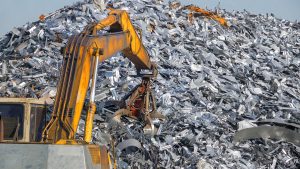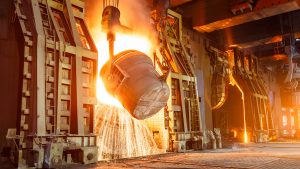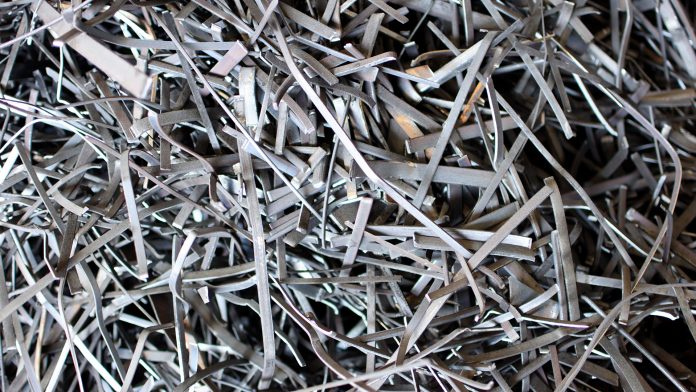Steel, crucial yet carbon-intensive, demands urgent attention at COP28. Pivotal decisions can jumpstart steel decarbonisation for a sustainable future.
Steel is one of the world’s most widely used materials. Even though we have the solutions for steel decarbonisation, steelmaking remains one of the biggest emitters of CO2. It accounts for around 11% of global carbon emissions, and demand is rising. If we are serious about decarbonising our economies, we need to take urgent action on steel, now.
COP28 must be a turning point in our collective fight against climate change, and we are determined to make steel decarbonisation part of the discussion. Without urgent action, emissions targets will be impossible to meet, and the world could be faced with little choice but to drastically reduce steel consumption. This would leave us with the even greater challenge of building the required clean infrastructure with one hand tied behind our backs.
While targeted commitments on steel don’t seem to be on the table at COP28, several potential outcomes could massively impact the steel industry’s future. We hope to see a commitment to phase out fossil fuels, triple renewable electricity capacity, double energy efficiency, and invest in initiatives and infrastructure that will drastically cut emissions over the next decade. This is the minimum action we need to see for the climate and the steel transition.
Phasing out coal and building low-carbon infrastructure will have profound implications for the steel industry; around 70% of steel produced today is made from iron ore in coal-powered blast furnaces. The switch to electric arc furnaces and new ways of making low-carbon primary steel from iron ore is a huge task requiring mammoth quantities of investment both in new facilities and the infrastructure to power them. For those considering such investments, the decisions taken in Dubai will be a crucial driver. Business investors need long-term confidence and direction to base their decisions on.
Without action, steelmaking will consume half of the total remaining 1.5°C carbon budget by 2050
While the headlines are scary, the good news is that much of the technology needed for steel decarbonisation already exists. This might mean switching from making primary steel to steel recycling for some steelmakers.
The United States has led the charge, with nearly 80% of domestic steel coming from scrap-based steel production. In countries and markets where a switch from iron ore to using scrap metal as the primary source of new steel is viable, we need to see a laser focus on steel recycling. This means investing in renewable energy to power electric arc furnaces, delivering high-quality recycled steel and setting ambitious standards and targets to improve the quality and efficiency of steel recycling.
There are many markets, though – particularly in Asia, Latin America, and Africa – where scrap steel won’t be a viable way to meet demands. These markets are responsible for most of the global steel production, with demand increasing as societies grow wealthier.
To decarbonise steel production in China and India, as well as for those sectors where customer demand or security of supply leads to a focus on new steel, we need to see faster progress towards technology that can deliver close to net-zero steel from iron ore. Technology is developing rapidly, with new plants expected to come online before the end of this decade.
However, both finance and demand for net-zero steel need to be in place to speed up progress.
Demand for green steel is out there – COP negotiators can help speed up the transition by addressing barriers to investment and stimulating demand
To highlight demand, Climate Group launched SteelZero in 2020. It’s a global initiative that brings together leading corporates to speed the decarbonisation of the steel industry.
Organisations that join SteelZero make a public commitment to buy and use 50% low-emission steel by 2030, setting a clear pathway to using 100% net-zero steel by 2050. We’re driving demand for responsibly produced and sourced steel by harnessing their collective purchasing power and influence.
A call to action: Improving access to renewable energy, empowering subnational governments and ensuring a just transition
At COP28, there are three main areas where we hope to see progress that will unlock steel decarbonisation.
Firstly, policy barriers to increasing renewable energy production need to be addressed. Research by Climate Group, released at COP28, shows that some of the world’s largest economies still have common policies and barriers that effectively slow down the roll-out of renewable electricity. From public sector or concessionary monopolies on electricity supply to restrictions on power purchase agreements, bureaucracy and vested interests are huge challenges.

Recycling steel is an important method to make steel production more sustainable
These barriers must go – they are stopping billions of dollars of global investment in renewable electricity. For a sector like steel, where phasing out fossil fuels means replacing coal with renewable electricity, the urgency of this transition is critical.
For the steel industry, its customers and investors, the potential rewards of decarbonisation need to be made too tempting to resist. To take just one example of how the energy transformation and the future of steel are inescapably linked, each MW of offshore wind capacity requires around 150 tonnes of steel.
With nearly 50 GW of offshore wind expected to be installed annually around the world by the end of this decade, offshore wind alone will require around seven million tonnes of steel per year – more than the UK’s annual production – with similarly enormous quantities needed to build and upgrade power networks around the world.
Second, we need to empower subnational governments to help build markets for green steel. Climate Group is the secretariat of the Under2 Coalition, which is the largest network of subnational governments committed to reaching net-zero emissions by 2050 at the latest.
As local governments are closer to their communities, oversee huge infrastructural and other projects, and are often able to implement climate laws and policies within their jurisdictions, they are often better placed than national governments to address the priorities of their communities and drive climate action at the same time.
That is why SteelZero is working with members of the Under2 Coalition to create a statement of intent for the public sector on steel decarbonisation.
Around 25% of steel demand globally goes directly to the public sector – particularly construction – and public funding shaped markets in sectors such as transport, infrastructure, and consumer goods. By setting targets for green procurement, which mirrors the SteelZero commitment, public sector bodies can massively impact the demand side.
Awareness around embodied carbon is growing, but much progress needs to be made. A commitment at COP to include subnational governments in the next round of NDCs (nationally determined contributions) would accelerate this progress. With half of all steel being used in construction, action to ensure embodied emissions standards are adopted in building codes and construction regulations will be an important part of the journey.

Steel production is important to countless industries, making it sustainable is imperative
Finally, steel decarbonisation won’t happen if we don’t find ways to ensure a just transition. In the context of steel, this means financial support for communities already living on the frontline of the climate crisis to help them access green steel products. But we also need to see practical action to ensure that skills are maintained and production facilities repurposed as steelmaking transitions from coal to electricity. Industrial communities around the world need to be supported as the economy changes.
For steel, a just transition also means adopting standards promoting investment in decarbonisation while reflecting historic usage and future demand. Take India, for example, where steel usage is currently around a quarter of usage in Europe – without access to historic steel scrap, India and other developing nations are faced with a stark challenge which will require significantly greater investment to decarbonise steel production than those faced by countries in Europe and North America.
That is why SteelZero supports an approach to steel decarbonisation that sets different emissions standards depending on the proportion of scrap which makes up steel. While we recognise that for some at COP there may be a temptation to push for a recycling-led approach, the reality is that we simply can’t afford to ignore the link between development, steel demand, and decarbonisation.
With effective climate finance mechanisms and the involvement of all levels of government, we can help the steel industry play its part in turning the tide on rising temperatures. It won’t be easy – but the prize on offer is great. COP28 is unlikely to provide as many of the answers as we hope – but some crucial steps can help kickstart the steel transformation and usher in an age of net-zero steel. Let’s take them.
Please note, this article will also appear in the sixteenth edition of our quarterly publication.





